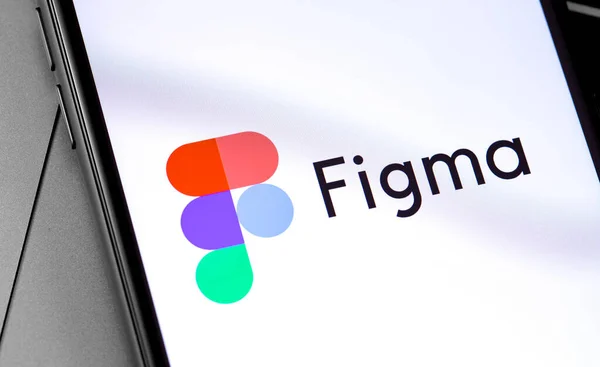Figma is certainly a well-known design tool that makes it possible not only for beginners but also for professionals to create striking and useful interfaces for websites and smartphone applications. If you happen to work as a web designer or an app developer, then you certainly already must have some notions about it. but getting a website designed is only the first step in taking a website into development. Beyond drawing out of your design its principles in HTML, CSS, JavaScript, and integration with a content management system (CMS) such as WordPress constitute a must to make it a fully functioning website. We’ll tell you the steps needed to bring your Figma-designed website, to WordPress in this article.
Table of Contents
- Export Your Figma Design
- Slice Your Design into HTML and CSS
- Convert HTML into WordPress Theme
- Add WordPress Tags
- Design Your WordPress Theme with its Various Options
- Put Your WordPress Theme to Test
- Launch Your WordPress Website
- Optimize Your WordPress Website for SEO
- Maintain Your WordPress Website
- Conclusion
Export Your Figma Design
Don’t forget to export the Figma design first. Only then will you be able to import it into your WordPress website? citing PNG, JPG, SVG, and PDF for example, Figma furnishes you with a format by which you can export your design. While JS is the most popular framework designers are found useful and reliable within the landscape of HTML and CSS. Figma extends this capability through its third-party plugin named HTML to Figma. Humanize the given sentence. Install the plugin and select “Export” from the menu. This will result in your design being exported as HTML and CSS.
Slice Your Design into HTML and CSS
When you export the HTML and CSS Dign after that you need to separate them into separate files which will help you to use them to build a website. Your layout design is soon to be composed of smaller components such as the header, footer, sidebar, and content areas, in the next step. To break up your design into HTML and CSS, you can use a decent code editor such as Visual Studio Code.
Convert HTML into WordPress Theme
And that is a time to transform your HTML and CSS into a theme in WordPress. These designs and functions of WordPress through theme files, which consist of multiple files. Create a directory named “theme” in the “wp-content/themes” section of your WordPress installation, and then place your HTML and CSS files into it to get an HTML theme into a WordPress theme. The file “style.css” which contains such information as the theme’s name, the creator’s name, and the description should also be created.
Add WordPress Tags
The WordPress tag plugin is a requirement for the theme to work properly. It should be embedded in every HTML and PHP code. WordPress tags are the shortcodes in the website code, which allow you to display live data, such as menus, widgets, and blog entries, on the website. WordPress tags like “wp header,” “wp footer,” “wp header,” “wp sidebar,” “ctx” and “the content” are essential for building a typical WordPress site.
Design Your WordPress Theme with its Various Options
Can you please now turn Figma into a WordPress theme by modifying it? This design should best fit your special needs. WordPress Customizer is a tool that will help users customize their WordPress theme without any of the need for code one. The site title and tagline, the header image, the background color and image, the font family and size, the widget sections, or the menu are small pieces of cake that can be chosen.
Put Your WordPress Theme to Test
The final important note is to run the test you modified the theme, as it is critical to check it works properly across different browsers and screen sizes. Application of various tools such as the W3C Markup Validation Service, the WP Theme Check plugin, and the Theme Unit Test suites can be handy in assessing the performance and functionality of your WordPress theme. You will save yourself from many a headache if you test your WordPress theme before rolling out your website where you can find and fix any popping flaws or bugs.
Launch Your WordPress Website
It is time to cell-unch your site now since you’ve checked your WordPress theme and applied any changes you needed. Here, purchasing of domain name, web hosting, and installation of WordPress on a hosting account is what you need to start your WordPress website creation. After doing the installation process, you’ll be asked to upload the WordPress theme you have chosen and activate it once it’s ready. Then, you have to start producing your website by creating pages, postings, pictures and videos to be uploaded.
Optimize Your WordPress Website for SEO
Now that your website on WordPress is up and running, you have to carry out a succession of optimizations to render it visible to search engines. There is a process called search engine optimization (SEO) that has an aim to attract more views and visitors from search engines such as Google and Bing to your website. Integrating an SEO plugin, such as Yoast SEO, tweaking your webpage’s title and meta description, use of keyword-rich headings and content, optimizing images and videos, and attaining good-quality backlinks to your website are among the strategies you could follow that would make your WordPress site Search Engine Friendly.
Maintain Your WordPress Website
While the WordPress website will be fully functioning if maintained, its security and safety will be compromised. The maintenance job may include things ranging from updating WordPress, your theme, and your plugins, regular website backup, monitoring the site’s performance and security, as well as correcting the errors and mistakes that will be of fundamental importance to keep your WordPress website up and running.
Conclusion
It is easy to feel that you can update Figma to WordPress during the design process, but by following the steps, you will be also able to build a website that is a match for Figma and that shows off your design skills. Just do not miss to do a sign-off, create a grid template, arrange and create a style sheet, and edit your Figma design, this is how your design can be launched and optimized, further, it can be made SEO proof and maintained.






